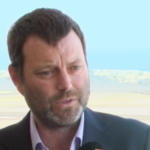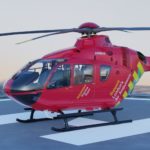Microsoft’s Project AirSim, a new platform to safely build, train and test autonomous aircraft through high-fidelity simulation, offers developers a “unique” opportunity to use a scalable system that ensures their models can meet real-world challenges, Ganesh Rao, general manager at Microsoft Autonomous Systems said.
In these realistic environments, models using artificial intelligence can run through millions of flights in seconds.
This means the simulators learn how to react to variables as they would in the physical world.
Project AirSim can help clients assess how their vehicle would fly in rain, sleet or snow, or whether a drone’s camera can see a wind turbine on an overcast day just as well as a clear one.
Saving time and money
Speaking at the Farnborough International Airshow 2022, Rao explained: “It helps you simulate real worlds in a virtual environment. You fly missions for drones, aircraft, different planes, and test it out, validate and use that for certification and training, in a safe way, in a way that can scale based on your need, at a much cheaper cost and time.”
He added: “AirSim is very unique, it is the only platform out there in the aerial domain that is scalable on the cloud platform, integrated with workflows that are necessary when your business starts growing, it has unique capabilities to model your sensors, configure where they need to be placed on your aircraft.”
‘Aerospace revolution’
Ade Famoti, senior director at Microsoft Autonomous Systems, said the autonomous aerial vehicle market was going from strength to strength.
“The marketplace is evolving, it truly is a revolution in aerospace,” he said. “We are seeing a lot more investment in the sector. What is most important is that we are seeing an influx of market capital into this segment.”
Millions of simulations
Ashish Kapoor, chief scientist, Microsoft Autonomous Systems, added: “In the case of AirSim, we are trying to recreate the entire process of a drone or an aerial vehicle or an aeroplane which is trying to accomplish something in the real world by itself.
“We take the entire aeroplane in simulation, create a virtual world, create the simulation of sensors, processes, all the things that it will interact with. If you can create that in the digital world, you have the option to play it millions and millions of times and learn from every time you play.”

